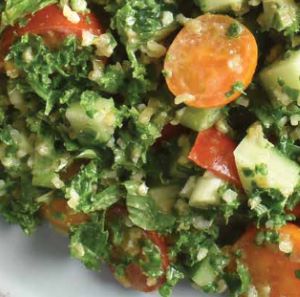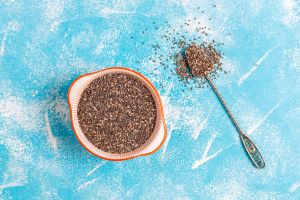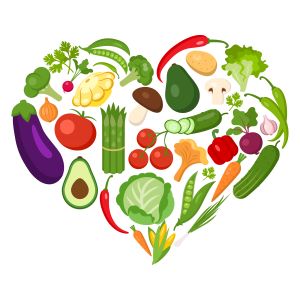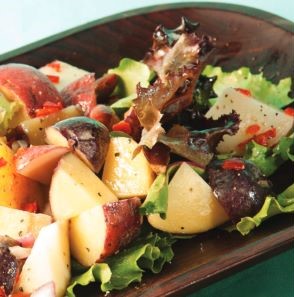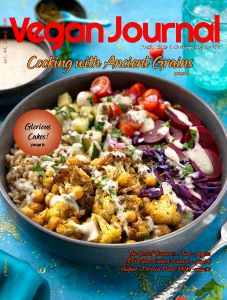Posted on
June 21, 2024 by
The VRG Blog Editor
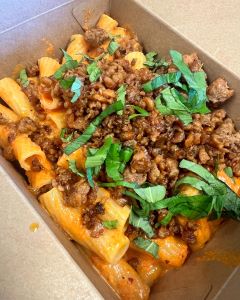
photo from Oleum
The Vegetarian Resource Group maintains an online Guide to Vegan/Vegetarian Restaurants in the USA and Canada. Here are some recent vegan restaurant additions. The entire guide can be found here: http://www.vrg.org/restaurant/index.php
To support the updating of this online restaurant guide, please donate at: www.vrg.org/donate
Here are some new additions to VRG’s guide:
Compatible Delights, 5400 Woodway Dr., Fort Worth, TX 76133
A completely plant-based restaurant on the south side of Fort Worth, featuring a rotating menu of Southern comfort classics and fresh/uncooked vegan options such as salads. Some customer favorites include Street Tacos (with cilantro lime), Chopped BBQ Sandwich (consists of jackfruit on a toasted bun with a side of MacNcheez), and Smoked BBQ Mac Bowl (consists of MacNcheez smothered with smoked BBQ jackfruit, grilled onions, pickles, diced tomatoes, and BBQ sauce). For the latest menu, check Instagram.
Grandma’s Kitchen, Arnot Mall Food Court, 3300 Chambers Rd., Horseheads, NY 14845
The menu at Grandma’s Kitchen is built around locally sourced dishes made from scratch. Adding a personal touch, many selections are vegan versions of family recipes. One of their Hot Plates, Shepherd’s Pie, combines grilled Impossible hamburger mixed with tomato and grilled chopped onions covered in green beans, topped with house made mashed potatoes and melted cheddar cheese. Hot Sandwiches include: Impossible Hamburger Sloppy Joe and barbecued Pulled Pork with their creamy coleslaw and pickles. Both feature house made sweet and tangy barbecue sauce. Cold Sandwich options are Egg Salad made with mustard and fresh dill or Grilled Daring Chicken Salad mixed with Dijon mustard, celery, and red grapes. Both include vegan mayo and come with lettuce, tomato, and onion. They offer a Kids’ Menu featuring Impossible Hot Dogs or Macaroni and Cheese. Two kinds of Bread baked from scratch, a few Sides, as well as Salads and Soups are also available. Grandma’s Kitchen serves Brunch on the weekend from 10am until supplies run out. Choices include Quiche of the Day made with Cheddar and a house made buttery crust, made from scratch Cinnamon Roll with cream cheese frosting, Tofu Scramble with peppers, onions, mushrooms, and light curry seasoning, Homefries and Breakfast Sausage. Consider leaving room for Dessert. There are lots of choices! Pies, Brownies, Dessert Bars, Cheesecake Bars, Cookies, and Cupcakes vary daily.
Oleum, 210 S. Central Ave., Baltimore, MD 21202
Oleum is located in the old Stratford University and there’s free parking. They strive to create globally inspired cuisine with seasonal, local ingredients. They do their best to honor special requests. Some of their Small Plates are: sweet & savory, crisp, panko Fried Eggplant drizzled with coconut nectar and maldon sea salt flakes, crispy, house blended, Falafel with fresh herbs and lime tahini sauce, and Batata Harra–pan fried spiced, Lebanese potatoes, with cilantro, sumac, Aleppo pepper, and house garlic sauce to name a few. Mains include several pasta dishes like Penne a la Vodka which sports organic san Marzano tomatoes, fresh parsley, and cashew cream. Al dente Roasted Red Pepper Rigatoni combines a creamy blend of roasted red peppers, smoked paprika, garlic, onion, soy cream, mozzarella, and fresh basil. There’s also semolina Trofie Pesto Pasta with a creamy house sauce, roasted cherry tomatoes, basil, and chili flakes as well as other pasta dishes. There are lots of Pizza possibilities. If you’re hungry and creative, Build Your Own (BYO) Neapolitan style pizza, beginning with 12″ hand stretched house dough, a base of house marinara and house cheez. Next, choose any two toppings and then build from there with options like Blue Cheez, garlic roasted chickpeas, mushrooms, spicy Italian sausage, Tempeh bacon, black olives & more. If you prefer a chef-designed pizza, Verano offers cashew white cream sauce, sundried tomatoes, roasted artichoke hearts and spicy greens in lemon, EVOO and grated parmes’n. The spicy Gabriel hosts house pine nut pesto, sausage, peppers, and more. Mushroom fans may face a tough decision between Fungus Amungus and The Forager. Both feature double fermented crusts, but the former is marinara based with an exotic blend of mushrooms, garlic, parsley, and house cheez while the latter has an herby white sauce, Violife feta, and morel mushrooms. Children might enjoy the 6-inch Kids Cheez Pizza with house marinara and mixed mozzarella. À La Carte Sides include Muhammara–a dip of fire roasted red peppers, walnuts, garlic, tomato, pomegranate molasses, sumac, Aleppo pepper, panko & parsley, a few Hummus variations, and more. There are also a couple of Salads and a Soup. You may want to leave room for Desserts like spiced Oleum Carrot Cake with cream cheese icing and pecans, Tiramisu featuring tofu mascarpone, dark rum, espresso, and cacao, a made to order Giant Chocolate Chip Cookie and a two layer German Chocolate Cake layered with coconut pecan caramel and cacao buttercream.
Pizza Verdura Sincera, 377 Moreland Ave. NE, Atlanta, GA 30307
Pizza Verdura Sincera offers pizza pies made with plant-based cheeses and vegan meats. Traditional pies include a margherita prepared with vegan mozzarella and the Greco topped with spinach, mushrooms, and Kalamata olives. Specialty pizzas include the Messicano topped with chipotle sausage, peppers, onions, and roasted corn. Desserts include tiramisu and a raspberry passionfruit torte.
Runaway Cow, 608 W. 31st St., Chicago, IL 60616
Runaway Cow offers plant-based ice cream made from oat milk. The menu features soft-serve cones, malt milkshakes, and ice cream cakes. The soft-serve ice cream is available in chocolate, vanilla, and twist as well as rotating seasonal flavors. Snowstorm flavors on the menu are blended with vegan cookies and candies such as Biscoff, peanut butter crunch, cake batter, and cookie dough. Sundaes include classics such as banana split as well as specialty flavors like German chocolate with caramel and coconut, turtle with fudge and caramel, and Elvis with banana slices and peanut butter.
The House of Mental Eatery (H.O.M.E), 1523 Dr. Martin Luther King Jr. Dr., Little Rock, AR 72202
Identifies as a black-owned, women-owned, and indigenous-owned business. Serves a variety of vegan dishes like the “Loaded Nachos,” which has corn tortilla chips smothered in cashew-based cheese with a variety of toppings. As well as the “Chili Dawg & House Fries,” which contains a vegan hot dog with plant based chili and cashew based cheese with a side of fries.
Tiny Vegan, 104 S. Sheppard St., Richmond, VA 23221
Serves vegan breakfast dishes like the “Bagel Sandwich,” which has a toasted everything bagel with cream cheese, lentil sausage, tofu scramble, and baby spinach. They also offer sandwiches such as the “Turkey Sub,” which has house-made seitan turkey, micro sprouts, sliced tomato, bacon, garlic hummus, and pickled jalapeño sauce on a toasted sub roll.
